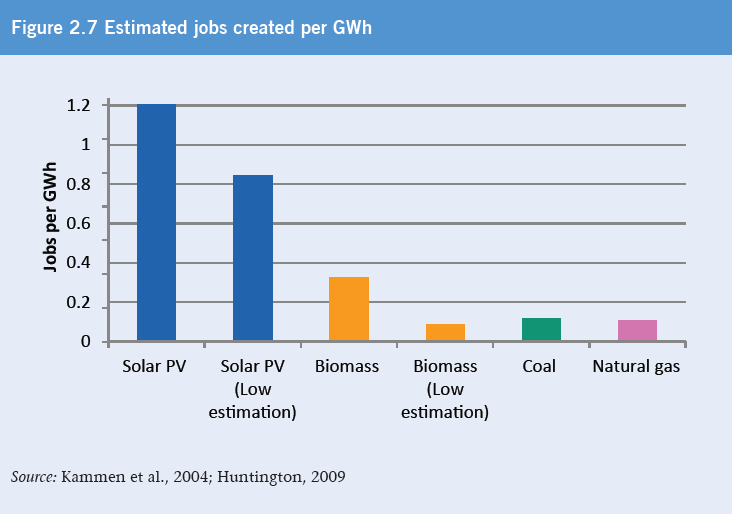One of the greatest challenges faced by developing countries is access to energy. An estimated 1.3 billion people lack access to electricity, and the lack of a reliable power source is often cited as the greatest burden on entrepreneurs in emerging markets. The United Nations, recognizing the importance of energy for wealth creation, has released the Poor People’s Energy Outlook 2012. According to the international governmental body, the key to progress in developing world energy will be to implement sustainable, decentralized systems with an emphasis on renewable energy, including biomass.
Decentralized systems are necessary because nearly half of the developing world’s population is engaged in agriculture—not clustered in cities. A more feasible option than extending power grids to the countryside is to adopt more efficient biofuel systems. According to the United Nations report:
Fuelwood and charcoal are today important existing sources of earnings for poor people, often second only to agriculture in rural areas of developing countries. Improved efficiency technologies in production and use, and formalization of these sub-sectors (currently often grey markets and so heavily affected by corruption) would improve, and make more sustainable, returns for the millions of poor people working in this sector.
Biofuels are emerging as another earning opportunity in rural areas, which effectively creates a new valued product alongside existing cash crops, primarily food and fibres. However it is challenging for poor farmers to understand how, and if, to engage with this emerging market, which is driven by export promotion and external priorities, and there are uncertainties associated with switching or integrating biofuel crops. But for those farmers for whom producing current crops is no longer competitive, biofuels provide new earning opportunities if governanceand legal protections around the sector are in place.
Sustainable biofuel energy sources in turn create jobs for suppliers and distributors. An example given is with ethanol in Brazil’s ProAlcool program which may be exported to Sub-Saharan Africa.
Brazil’s ProAlcool programme has created the world’s foremost ethanol economy and made it the second largest producer globally. Rural job creation has been a major benefit of ProAlcool because alcohol production in Brazil is labor intensive. Around 700,000 direct jobs, plus three to four times this number of indirect jobs have been created. It has cost between USD 12,000 and 22,000 to create each job, which is around 20 times less than in the chemical industry by comparison. Of the 700,000 total jobs, around 300,000 are cane cutters earning USD 300-400 per month, on a piece rate. Cane cutting is seasonal however with cutters earning USD 1.35 per hour each day for six days a week during the growing season of six to seven months.
Solar power is also seen as a viable option due to its stand-alone characteristics and ability to create jobs. Renewable energy sources such as solar are noted by the United Nations for their relative employment intensities.
 And although renewable energy supplies can be costly to establish, it may be less expensive than extending national grids in developing countries.
And although renewable energy supplies can be costly to establish, it may be less expensive than extending national grids in developing countries.
…the costs of extending the grid to rural and sparsely populated areas can be very high due to the transmission distances, poor household’s low electricity use, and the losses incurred in long distance transmission. Such limitations on the potential of the grid to reliably and affordably reach the 1.4 billion without electricity access are increasingly being recognized. The IEA estimates that to achieve universal energy access by 2030, 100 per cent of urban, but only 30 per cent of rural, households will be connected to grid electricity. The remainder are expected to be connected with minigrid or isolated systems.
Although good examples exist, currently decentralized mini-grid schemes only make up a small percentage of electricity connections.
So what next? To achieve universal energy access by 2030 around USD 35 to 40 billion must be invested, an amount well above current investment levels, although only a small proportion of total international energy funding. The investment is needed to generate 952 TWh of electricity by the target date, including 400 TWh from mini-grids and 172 TWh from isolated systems. Accompanying this power capacity will be numerous employment opportunities.
See the Poor People’s Energy Outlook 2012 for more details on the potential of renewable energy in the developing world.
